Science Everyday



Celebrating Vishwakarma Puja 2025: Honoring the Divine Architect
Date: September 14, 2025
Occasion: Vishwakarma Puja – A Sacred Tribute to Creativity and Craftsmanship
Vishwakarma Puja, celebrated on the 17th day of Bhadrapada (Kanya Sankranti), is a day dedicated to Lord Vishwakarma, the divine architect and celestial craftsman of the universe. This sacred occasion honors artisans, engineers, designers, and workers across industries who shape our world with skill, innovation, and dedication.
On this day, people worship tools, machines, instruments, and workplaces as symbols of creativity and prosperity. The festival is not just a religious observance but also a reminder of the deep connection between human innovation and divine inspiration.
Lord Vishwakarma: The Cosmic Engineer
In Hindu mythology, Lord Vishwakarma is revered as the supreme architect of the cosmos, credited with designing some of the most magnificent structures, weapons, and tools ever mentioned in ancient scriptures. His creations demonstrate advanced principles of design, geometry, material science, and mechanics, many of which resonate with modern engineering practices.
Some of Lord Vishwakarma’s legendary works include:
Dwarka – The submerged city of Lord Krishna, showcasing remarkable urban planning, hydraulic engineering, and coastal construction techniques.
Indraprastha – The capital city of the Pandavas, famous for its symmetrical layout, sustainable design, and advanced urban engineering concepts.
Vajra (Thunderbolt of Indra) – A powerful weapon symbolizing precision metallurgy and energy manipulation, reflecting early mastery over materials.
Pushpaka Vimana – The mythical flying chariot, inspiring concepts of aerodynamics and propulsion, often compared to modern aerospace technology.
These stories highlight not only mythology but also the timeless relevance of engineering, innovation, and craftsmanship in human progress.
Rituals and Celebrations
Vishwakarma Puja is observed with devotion and a spirit of gratitude. Here’s how you can celebrate meaningfully:
Clean Your Workspace: Declutter and organize your tools, machines, and surroundings as a symbolic gesture of respect.
Offer Worship: Adorn Lord Vishwakarma’s idol or image with flowers, incense, and sweets.
Chant Mantras: Recite sacred chants such as “Om Vishwakarmaya Namah” to seek blessings for creativity, precision, and safety.
Share Prasad: Distribute offerings among family, colleagues, and workers to spread harmony and collaboration.
Reflect and Innovate: Take a moment to think about your craft, set new goals, and seek inspiration for future innovations.
The Spirit of Vishwakarma Puja
This day reminds us that creation is both an art and a science. It encourages us to respect the tools of our trade, celebrate human ingenuity, and embrace the spirit of continuous improvement. Whether you are an artisan, engineer, designer, or innovator, Vishwakarma Puja is an invitation to align your work with precision, dedication, and purpose.
Celebrate your work and share your moments of devotion with the world using #VishwakarmaPuja2025.

World Ozone Day 2025: Guarding Our Planet’s Shield
Date: September 16, 2025
Theme: Ozone for Life
Every year on September 16, the world comes together to celebrate World Ozone Day — a reminder of the collective global action taken to protect our planet’s ozone layer. This day commemorates the signing of the Montreal Protocol in 1987, a landmark international agreement that successfully led to the phase-out of ozone-depleting substances (ODS) like chlorofluorocarbons (CFCs).
🌐 Why the Ozone Layer Matters
The ozone layer is our planet’s invisible shield, protecting all life on Earth by absorbing harmful ultraviolet (UV) radiation from the sun. Without it, we would face a dramatic increase in:
Skin cancer and cataracts
Crop damage and reduced food security
Disrupted ecosystems and declining biodiversity
In short, the ozone layer is essential for life — hence this year’s theme, “Ozone for Life.”
🛰️ Progress and Hope
Thanks to decades of global cooperation, the ozone layer is now on a path to recovery. According to NASA (2025), the ozone hole is shrinking, with scientists projecting full recovery by 2066. This remarkable success shows what humanity can achieve when we work together for a common cause.
⚠️ Challenges Ahead
While we celebrate progress, new threats remain. Substances like hydrofluorocarbons (HFCs) — though not harmful to ozone — are potent greenhouse gases that worsen climate change. Continued innovation, strict enforcement, and sustainable practices are necessary to protect both the ozone layer and the climate.
✅ How You Can Take Action
You don’t need to be a scientist or policymaker to make a difference. Here’s how you can contribute:
📢 Spread Awareness: Share facts about ozone protection with your friends, family, and community.
🛒 Choose Eco-Friendly Products: Opt for appliances and products that are CFC- and HFC-free.
🏛️ Support Green Policies: Advocate for and support policies that protect the environment and phase out harmful substances.
🌱 A Collective Responsibility
World Ozone Day is not just a celebration of past achievements — it’s a call to action for the future. Protecting the ozone layer is crucial for sustaining life on Earth, and every step we take today helps secure a healthier, safer planet for generations to come.
Let’s work together to keep guarding our planet’s shield! 💙🌏

Engineers’ Day 2025: Celebrating Deep Tech & Engineering Excellence
Engineers’ Day 2025: Celebrating Deep Tech & Engineering Excellence
On September 15, 2025, India celebrates Engineers’ Day, honoring the birth anniversary of Sir M. Visvesvaraya, the legendary engineer whose contributions shaped modern infrastructure. This year’s theme, “Deep Tech & Engineering Excellence: Driving India’s Techade,” underscores the transformative power of cutting-edge technologies and engineering innovation in propelling India into a technology-driven future.
Sir M. Visvesvaraya: A Legacy of Excellence
Sir Mokshagundam Visvesvaraya (1861–1962), a Bharat Ratna recipient, exemplified engineering brilliance. His pioneering works include:
• Krishna Raja Sagara (KRS) Dam, Mysore: A marvel of civil engineering, this dam utilized an innovative automatic sluice gate system, showcasing early automation and hydraulic engineering principles.
• Flood Protection System for Hyderabad: His strategic flood control measures protected the city from the Musi River’s wrath, blending hydrology with urban planning.
• Block System Irrigation: Visvesvaraya’s irrigation designs optimized water distribution, enhancing agricultural productivity through precision engineering.
These achievements reflect the fusion of scientific rigor and practical innovation, aligning with this year’s theme of deep tech—leveraging AI, quantum computing, robotics, and advanced materials to solve complex challenges.
Deep tech represents groundbreaking innovations rooted in scientific discovery and engineering excellence. From AI-driven healthcare diagnostics to sustainable energy solutions, engineers are at the forefront of India’s ambition to lead the global tech landscape. Examples include:
• Quantum Computing: ISRO’s advancements in quantum communication for secure satellite networks.
• Biotechnology: Indigenous mRNA vaccine platforms, showcasing molecular engineering.
• Smart Infrastructure: IoT-enabled smart cities optimizing energy and traffic systems.
This Engineers’ Day, let’s celebrate by:
• Upskilling: Dive into deep tech fields like machine learning or blockchain through online courses.
• Innovating: Collaborate on projects like sustainable urban designs or renewable energy systems.
• Honoring Tools: Following Vishwakarma Puja traditions, worship your tools and workspace for precision and safety.
• Sharing Knowledge: Host webinars or workshops to inspire the next generation of engineers.
Join the Celebration
Reflect on how engineering excellence drives progress. Share your innovations, projects, or tributes to Sir Visvesvaraya with #EngineersDay2025 and #DeepTechIndia. Let’s build a future where technology and creativity converge to shape India’s Techade!

Vikram Sarabhai: The Visionary Who Gave India Its Space Dream
Born: 12 August 1919 – Passed: 30 December 1971
"We must be second to none in the application of advanced technologies to the real problems of man and society." – Vikram Sarabhai
A physicist, astronomer, visionary, and institution builder — Dr. Vikram Sarabhai is celebrated as the Father of the Indian Space Program. His work transformed India’s scientific capabilities and global standing.
🚀 Key Milestones:
- Founder of PRL (1947): Established the Physical Research Laboratory in Ahmedabad for pioneering space & atmospheric sciences.
- Founder of ISRO: Laid the foundation of India’s space activities and vision.
- Institution Builder: Helped set up IIM–Ahmedabad, NID, and the Community Science Centre (now Vikram A. Sarabhai Community Science Centre).
- Industrialist & Innovator: Successfully led ventures like Sarabhai Chemicals, Swastik, and Sarabhai Glass.
🏅 Honors:
- Padma Bhushan (1966) | Padma Vibhushan (Posthumous, 1972)
- Shanti Swarup Bhatnagar Award (1962)
- Moon crater Bessel named in his memory
- Vikram Sarabhai Space Centre (VSSC), Thiruvananthapuram named in his honor
Today, on his birth anniversary, we pay tribute to his unmatched contribution to science, technology, and nation-building. His vision continues to guide India’s journey to the stars. 🌌

Chandrayaan-2: A Testament to Indian Scientific Brilliance
On July 22, 2019, at 2:43 PM IST, India made a historic stride in space exploration with the launch of Chandrayaan-2, the nation's second lunar mission. The spacecraft lifted off from the Satish Dhawan Space Centre (SDSC) in Sriharikota, riding atop the powerful Geosynchronous Satellite Launch Vehicle Mark III (GSLV Mk III)—India’s heaviest and most advanced rocket.
Chandrayaan-2 was a highly ambitious mission by the Indian Space Research Organisation (ISRO), aiming to explore the Moon’s south polar region—an area previously untouched by any other nation.
. SHAKTI UNIT VINJANA BHARTI salutes Indian scientists for their brilliance!
#ISRO
#MoonMission
.jpeg)
Celebrating Our Heroes: National Doctors Day 2025
Date: July 1, 2025
Today, as we mark National Doctors’ Day, we pause to recognize and celebrate the exceptional dedication, skill, and compassion of doctors across the nation. These heroes in white coats work tirelessly—often behind the scenes—to ensure our well-being, comfort, and recovery.
Observed annually on July 1st in many regions, National Doctors’ Day honors the invaluable contributions of physicians, from delivering routine care to performing life-saving procedures. It is a day to reflect on the pivotal role doctors play—not just as medical professionals, but as trusted guides on our health journeys.
The Heartbeat of Healthcare
Doctors are at the forefront of our communities. They navigate the complexities of modern medicine with expertise and empathy, balancing science with a deep understanding of human emotions. Whether in bustling hospitals, local clinics, or rural outposts, they stand as pillars of hope during our most vulnerable moments.
In the face of challenges—be it pandemics, natural disasters, or evolving medical needs—our doctors continue to demonstrate unwavering commitment. They innovate, advocate, and heal, often putting their own well-being aside to care for others.
A Salute to Their Unseen Efforts
Behind every successful surgery, every accurate diagnosis, and every comforting conversation lies countless hours of study, training, and sacrifice. Doctors work long, unpredictable hours, make difficult decisions, and shoulder immense responsibility.
This Doctors’ Day 2025, let us not just celebrate their achievements but also their humanity—the kindness, patience, and resilience they show every day.
How You Can Show Appreciation
📝 Write a Thank-You Note – A simple, heartfelt message can go a long way. Reach out to a doctor who has impacted your life.
💬 Share Your Story – Post on social media or in your community about a doctor who made a difference to you or a loved one.
🎁 Support Healthcare Initiatives – Consider donating to organizations that support doctors’ well-being, education, or medical research.
🌸 Say It with Flowers – A small gesture, like sending flowers to your doctor’s office, can brighten their day.
Final Thoughts
As we celebrate National Doctors’ Day 2025, let’s take a moment to express our gratitude to these remarkable individuals. Their expertise saves lives, their compassion soothes pain, and their dedication inspires us all.
To every doctor — thank you for being the heroes we rely on, today and every day.

World Asteroid Day: Raising Awareness, Protecting Our Planet
Every year on June 30, we observe World Asteroid Day — a global movement dedicated to raising awareness about asteroids, their potential hazards, and the scientific efforts aimed at protecting our planet. This day not only celebrates our growing understanding of these cosmic bodies but also calls for collective action in safeguarding Earth from future asteroid impacts.
🌌 Why June 30? The Legacy of the Tunguska Event
World Asteroid Day commemorates the Tunguska event that occurred on June 30, 1908, when a massive explosion flattened over 2,000 square kilometers of Siberian forest. Believed to have been caused by an asteroid or comet fragment, the Tunguska event remains the largest impact-related incident in recorded history. While the region was sparsely populated and no direct human casualties were reported, the event served as a stark reminder of the potential destruction asteroids can bring.
🚀 The Importance of Asteroid Detection and Planetary Defense
Today, scientists have identified thousands of near-Earth objects (NEOs) — asteroids and comets with orbits that bring them close to our planet. Although most pose no immediate threat, even small asteroids can cause significant damage if they enter Earth’s atmosphere.
This is why ongoing efforts in asteroid detection, tracking, and deflection are critical. Space agencies and research institutions around the world, including NASA, ESA, and others, have made planetary defense a top priority. One notable mission is NASA’s DART (Double Asteroid Redirection Test), which successfully demonstrated our ability to alter an asteroid’s trajectory — a groundbreaking step in protecting Earth from potential impacts.
🌟 How World Asteroid Day Makes a Difference
World Asteroid Day serves as a platform to:
✅ Educate the public about the science of asteroids and the risks they pose.
✅ Promote research and innovation in planetary defense technologies.
✅ Encourage international collaboration in space monitoring and protection initiatives.
✅ Inspire the next generation of scientists, engineers, and space enthusiasts.
Events like public lectures, webinars, school programs, documentary screenings, and community discussions are organized globally to mark this day. These activities help demystify asteroids and engage people of all ages in conversations about space safety and exploration.
🌎 Looking Ahead: Building a Safer Future
The story of asteroids is not just about cosmic threats — it’s about human ingenuity, scientific discovery, and global cooperation. By supporting asteroid research and planetary defense programs, we contribute to a safer, more secure future for generations to come.
On this World Asteroid Day, let’s unite in our commitment to protect our home planet from cosmic hazards and celebrate the remarkable achievements of space science.
💫 Together, we can turn knowledge into action — and safeguard Earth from the stars above.

International Yoga Day 2025: Embrace Wellness, Unity, and Inner Peace
Take Action:
• Practice: Join local/virtual yoga sessions.
• Educate: Share yoga’s benefits with loved ones.
• Celebrate: Attend community events.
Be part of #YogaDay2025 and #HarmonyInMotion! Let’s create a wave of wellness together! 🌍✨

World Sickle Cell Awareness Day: Uniting for Awareness and Action
🧬 The Science Behind Sickle Cell
Sickle cell disease results from a mutation in the hemoglobin gene, causing red blood cells to become rigid and crescent-shaped. These abnormal cells can obstruct blood flow, leading to severe pain, infections, and organ damage. While it predominantly affects individuals of African, Mediterranean, Caribbean, and South Asian descent, anyone can carry the sickle cell trait.
💡 Key Facts
• Inherited Condition: Sickle cell disease occurs when both parents pass on the sickle cell gene.
• Early Detection Saves Lives: Newborn screening enables early diagnosis and intervention.
• Hope Through Innovation: Treatments like blood transfusions, medications, and emerging gene therapies are transforming lives.
🌟 We Can Prepare!
Together, we can make a difference by taking action:
• Educate: Promote awareness about genetic testing and counseling to empower informed decisions.
• Support: Advocate for equitable healthcare access and increased funding for sickle cell research.
• Empower: Amplify the inspiring stories of resilience from the sickle cell community.
Join the Movement
This June 19, let’s shine a light on sickle cell disease and work toward a future free from its challenges. Share this message, connect with others, and join us in building a stronger, more informed community.
Get Involved:
Share your story or learn more about how you can support sickle cell awareness using #SickleCellAwareness and #WeCanPrepare.

Remembering Jayant Sahasrabuddhe: A Life in Service of Indigenous Science
Life has to end for everyone, but the sudden departure of great souls is a matter of particular surprise and sorrow. In this sense, the untimely demise of Shri Jayant Sahasrabuddhe ji is an irreparable loss. He worked continuously for many years for the indigenous science movement. He continuously tried to highlight scientific awareness in social and public life in the light of Indian knowledge tradition.
Jayant Sahasrabuddhe ji was born on 17 April 1966 in Girgaum Mumbai; his father Shrikant Sahasrabuddhe was also associated with the Rashtriya Swayamsevak Sangh. He obtained his BE degree from the University of Mumbai, after which he worked for some time at BARC, Mumbai. In 1989, he left the job and became the pracharak of the Sangh. Jayant ji was the National Secretary of Vigyan Bharti since 2009. His image was that of an influential and skilled educator and organiser. His lectures on Art and Science, Nataraja and Science, Swami Vivekananda Ji and Science, the lives of Indian Scientists, including Mahendra Lal Sarkar, Prafulla Chandra Rai, Jagdish Chandra Bose, Meghnad Saha, CV Raman, etc. are unforgettable.
Jayant Rao ji gave his lectures in seminars and workshops and in many educational institutions of the country. On a similar occasion, on the occasion of World Environment Day, a tree plantation drive was conducted under the leadership of Jayantrao ji on the campus of Deshbandhu College, University of Delhi. Now, those plants have become trees and their foliage and shadows grace the area. Jayant Ji played an important role in reviving Indian culture and highlighting the importance of the ancient science of India. His tireless efforts to preserve our rich tradition and spread awareness about the deep knowledge of our forefathers cannot be appreciated enough. Although he did not like to be praised, today when he is no longer physically present in this world his talents and contributions should be celebrated. Jayant Ji had many dreams about which he used to inform his workers from time to time.
We all have to work together to take forward those dreams of Jayant ji. I myself was always inspired by his unwavering commitment and conscientious personality. His invaluable contribution has left an indelible mark on the lives of many of us, inspiring countless individuals to embrace our cultural roots and focus on scientific temper to serve the well-being of humanity. His selfless spirit and his positive impact influenced many lives. He supported the work of the National Service Scheme (NSS) running in the college and promoted its methods and objective. This is the reason why Jayant Ji not only became everyone’s favorite in small meetings but also made them his own. Once if he gave a suggestion, he used to bring it up in the next meeting in order to remind others of it.
Being himself a man of wisdom and deep-rooted knowledge and ideas, he also had great integrity. He dedicated his entire life selflessly to the nation. On his suggestion, Deshbandhu College’s newly created science section was named after the best scientist of India, Acharya Prafulla Chandra Roy. Getting people involved with science and serving humanity were his twin life missions.
His spontaneous, soulful and intellectual personality will always give us strength. At the organizational level, he inspired many youths across the country to explore indigenous science for nation-building. His efficiency at work, leadership ability, versatile personality, singing talent and dedication will remain exemplary and unforgettable. This world is subject to the laws of nature, and change is the universal law that everyone has to accept. The body is only a means to serve certain ends. May God give the best place to the pious soul of Jayant Ji. Om Shanti!
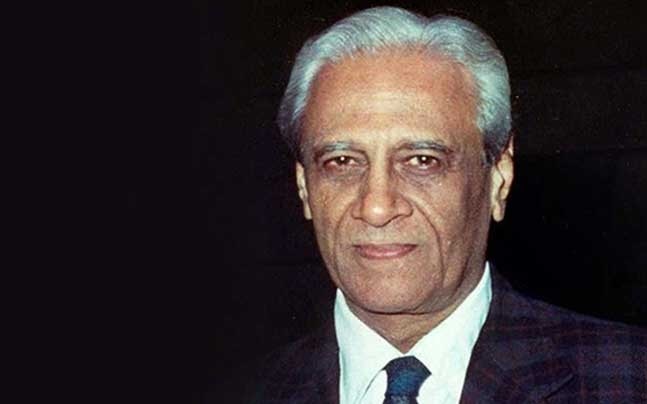
Satish Dhawan: The Visionary Behind India Space Odyssey
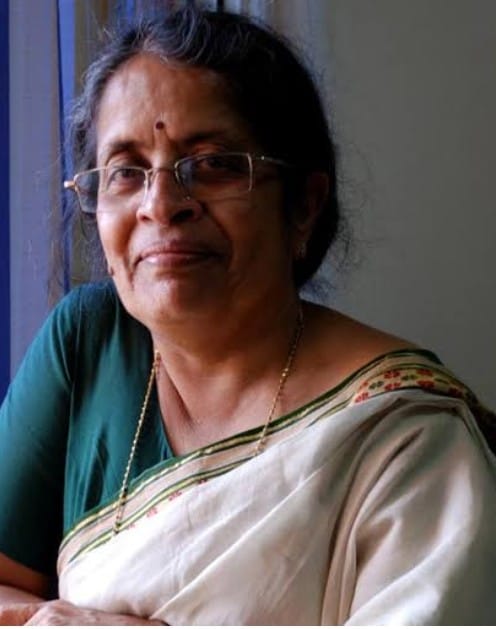
श्रद्धांजलि Padma Shri Rohini Godbole (12 November 1952 - 25 October 2024)
Padma Shri (2019)
Rohini Godbole
(12 November 1952 - 25 October 2024)
was an Indian physicist and academic specializing in elementary particle physics.
She was professor at the Centre for High Energy Physics, Indian Institute of Science, Bangalore.She worked extensively on different aspects of particle phenomenology over three decades, She was an elected fellow of all the three academies of Science of India and also the Science Academy of the Developing World .
Apart from her work in academics, Godbole was also a much sought-after communicator of science, often delivering talks to young students, scholars and scientists on everything physics. She was supporter of women pursuing careers in science and technology, and along with Ram Ramaswamy, edited the book Lilavati’s Daughters,a collection of biographical essays on women scientists from India.
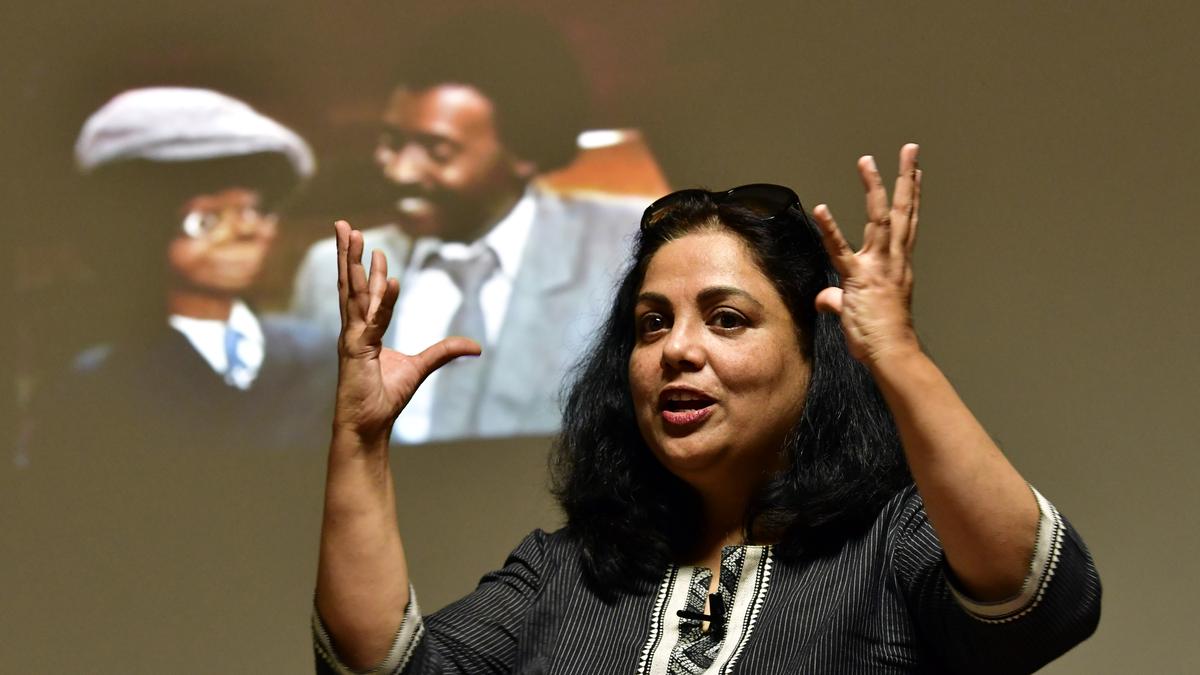
Leading Indian woman scientist is International Brain Research Organisation’s president-elect
The first scientist from a developing country to be appointed to the top position of IBRO, Shubha Tole is currently the dean of graduate studies at Tata Institute of Fundamental Research, Mumbai
A leading Indian woman scientist, Shubha Tole has been appointed as the president-elect of the International Brain Research Organisation (IBRO). She is the first scientist from a developing country to be appointed to the top position. The IBRO governing council represents 69 scientific societies and federations from 57 countries worldwide. It recently elected new officers during its annual assembly in Chicago, USA. Ms. Tole, currently serves as the dean of graduate studies at Mumbai’s premier scientific research institute – Tata Institute of Fundamental Research.
The International Brain Research Organization is the global federation of neuroscience organizations which promote and support neuroscience around the world through training, teaching, collaborative research, advocacy and outreach. While speaking exclusively to The Hindu, Ms. Tole said, “Leadership position offers the opportunity to have impact on a wider range of issues and expands the range of people one can help. The importance of women role models cannot be under-emphasized in these matters.”
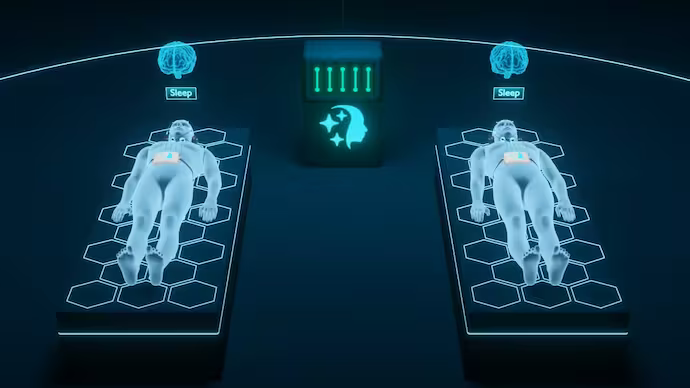
Two people communicated in their dreams, scientists claim experiment successful
A California-based startup, REMspace, claimed that it succeeded in an experiment involving two individuals who communicated in their dreams on September 24.
Ever thought of talking to someone while dreaming? Well, it seems that scientists in California have brought this phenomenon close to reality after they achieved the first two-way communication between individuals through lucid dreaming.
REMspace, a California-based startup that designs technology to enhance sleep and lucid dreaming, exchanged a message between two participants, selected for the experiment, who were asleep on September 24, Dailymail.com reported.
The participants were both experienced lucid dreamers, meaning that they had honed the skill of being aware that they were dreaming while still asleep. Lucid dreaming occurs during the REM (Rapid Eye Movement) stage of sleep, a period when the brain is most active and dreams are vivid.
As the participants settled into their beds, they were equipped with specially designed apparatuses that tracked their brain waves and other polysomnographic data remotely. These devices were linked to a central server, the heart of the REMspace system, which monitored their sleep patterns in real-time.
The experiment began as one individual drifted into a lucid dream. The server, detecting the distinct brain wave patterns indicative of lucid dreaming, generated a random word from a unique language called 'Remmyo'. This word was transmitted to the first participant via earbuds, a gentle whisper in the darkness of his dream.
In his dream state, the first participant heard the word 'Zhilak' and repeated it aloud, his voice captured by the sensors and stored on the server. This was the first half of communication, a message sent from one dreamer to another.
Eight minutes later, the second participant entered her own lucid dream. The server, now aware of her dream state, transmitted the word 'Zhilak' to her through her earbuds. In her dream, Maya heard the word and repeated it, meaning that the message had been received.
When the second participant woke up, she confirmed the word she had received in her dream, marking the first-ever successful communication between two people while they were dreaming. This was not just a simple exchange, it was a historic milestone that bridged the gap between the conscious and subconscious worlds.
REMspace said it used 'specially designed equipment' like a server, apparatus, Wi-Fi and sensors, but did not specify what technology it used.
The technology is yet to be reviewed or replicated by other scientists. But if the experiment gets approval, it would mark a major milestone for sleep research and would be beneficial for applications like mental health treatment, skills training and more, according to REMspace.
"Yesterday, communicating in dreams seemed like science fiction. Tomorrow, it will be so common we won't be able to imagine our lives without this technology. This opens the door to countless commercial applications, reshaping how we think about communication and interaction in the dream world," REMspace CEO and founder Michael Raduga said
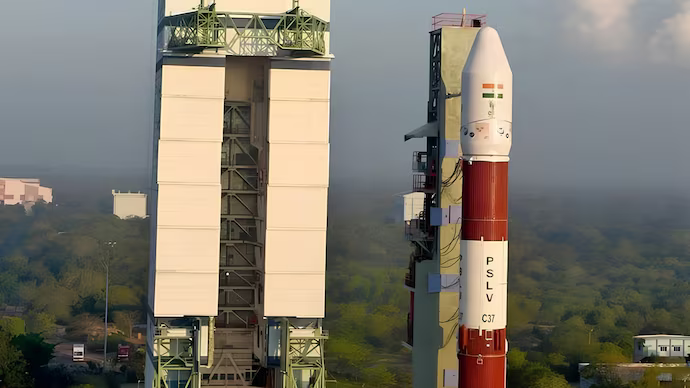
PSLV-C37, which launched record 104 satellites, falls into the Atlantic after 8 years
The upper stage of India's PSLV-C37 re-entered Earth's atmosphere, marking the end of its nearly eight-year journey in space.
Eight years after it launched from India with a record 104 satellites to space, the upper stage of the Polar Satellite Launch Vehicle has safely crashed over the Atlantic Ocean.
On October 6, 2024, the upper stage of India's PSLV-C37 re-entered Earth's atmosphere, marking the end of its nearly eight-year journey in space. This event highlights India's commitment to responsible space practices and debris mitigation.
PSLV-C37, launched on February 15, 2017, made history by deploying a record 104 satellites in a single mission. The primary payload was Cartosat-2D, accompanied by 103 co-passenger satellites, including two Indian nanosatellites and various international small satellites.
After successfully injecting all satellites into their designated orbits, the rocket's upper stage (PS4) was left in an orbit of approximately 470 x 494 km.
Over time, its altitude gradually decreased due to atmospheric drag, a process closely monitored by the Indian Space Research Organisation (ISRO) through its IS4OM (ISRO System for Safe and Sustainable Space Operations Management) facility.
The re-entry occurred on October 6, 2024, as predicted by both US Space Command and IS4OM, with the debris impacting the North Atlantic Ocean.
This re-entry, happening within eight years of launch, fully complies with international debris mitigation guidelines, which recommend limiting the post-mission orbital life of objects in Low-Earth orbit to 25 years.
The agency has been actively working to reduce the orbital lifetime of PSLV upper stages to five years or less through controlled de-orbiting maneuvers. Missions like PSLV-C38, PSLV-C40, PSLV-C43, PSLV-C56, and PSLV-C58 have already implemented these practices.
Looking ahead, ISRO plans to introduce controlled re-entry of upper stages in future PSLV missions, further minimising space debris. These efforts align with ISRO's Debris Free Space Mission (DFSM) objectives, aiming for implementation by 2030.
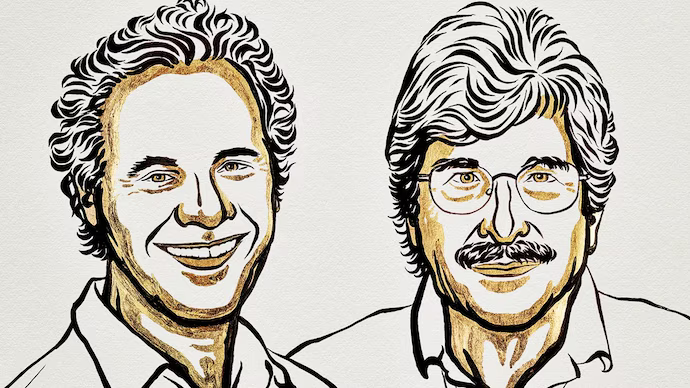
Nobel Prize 2024 in Medicine to Victor Ambros and Gary Ruvkun for mRNA discovery
The Nobel Prize in Physiology or Medicine for 2024 has been awarded to Victor Ambros and Gary Ruvkun for the discovery of microRNA and its role in post-transcriptional gene regulation.
The information in our chromosomes acts like an instruction manual for all our cells. While every cell contains the same genes, different cell types, like muscle and nerve cells, have unique characteristics. This happens through gene regulation, where each cell activates only the genes it needs.
Victor Ambros and Gary Ruvkun were curious about how different cell types form. They discovered microRNAs, tiny RNA molecules that play a key role in gene regulation. Their discovery introduced a new concept in gene regulation, now known to be crucial for multicellular organisms, including humans. The human genome contains over a thousand microRNAs, which are essential for development and function.
"This year’s Nobel Prize focuses on the discovery of a vital regulatory mechanism used in cells to control gene activity. Genetic information flows from DNA to messenger RNA (mRNA), via a process called transcription, and then on to the cellular machinery for protein production. There, mRNAs are translated so that proteins are made according to the genetic instructions stored in DNA.," The Nobel Prize release read.
Victor Ambros was born in 1953 in Hanover, New Hampshire, USA. He earned his PhD from the Massachusetts Institute of Technology (MIT) in 1979 and continued there as a postdoctoral researcher until 1985. In 1985, he became a Principal Investigator at Harvard University. From 1992 to 2007, he served as a Professor at Dartmouth Medical School, and he is currently the Silverman Professor of Natural Science at the University of Massachusetts Medical School in Worcester, MA.Gary Ruvkun was born in 1952 in Berkeley, California, USA. He received his PhD from Harvard University in 1982, followed by postdoctoral work at MIT from 1982 to 1985. In 1985, he became a Principal Investigator at Massachusetts General Hospital and Harvard Medical School, where he is now a Professor of Genetics.
The prestigious award is given annually by the Nobel Assembly consisting of 50 professors at Karolinska Institutet, recognising personnel who have made significant contributions to the field of medicine for the benefit of humankind.The 2023 Nobel Prize in Physiology or Medicine was awarded to Katalin Kariko, and Drew Weissman for their discoveries concerning nucleoside base modifications that enabled the development of effective mRNA vaccines against Covid-19.
The Nobel Prize announcements are a highly anticipated event every October, with committees convening in Stockholm and Oslo to reveal the laureates.
Since its inception in 1901, the Nobel Prize has been awarded to scientists who have made the most important discoveries for the benefit of humankind.
When the inventor, entrepreneur and businessman Alfred Nobel died, his will stated that his fortune was to be used to reward “those who, during the preceding year, shall have conferred the greatest benefit to humankind.”

